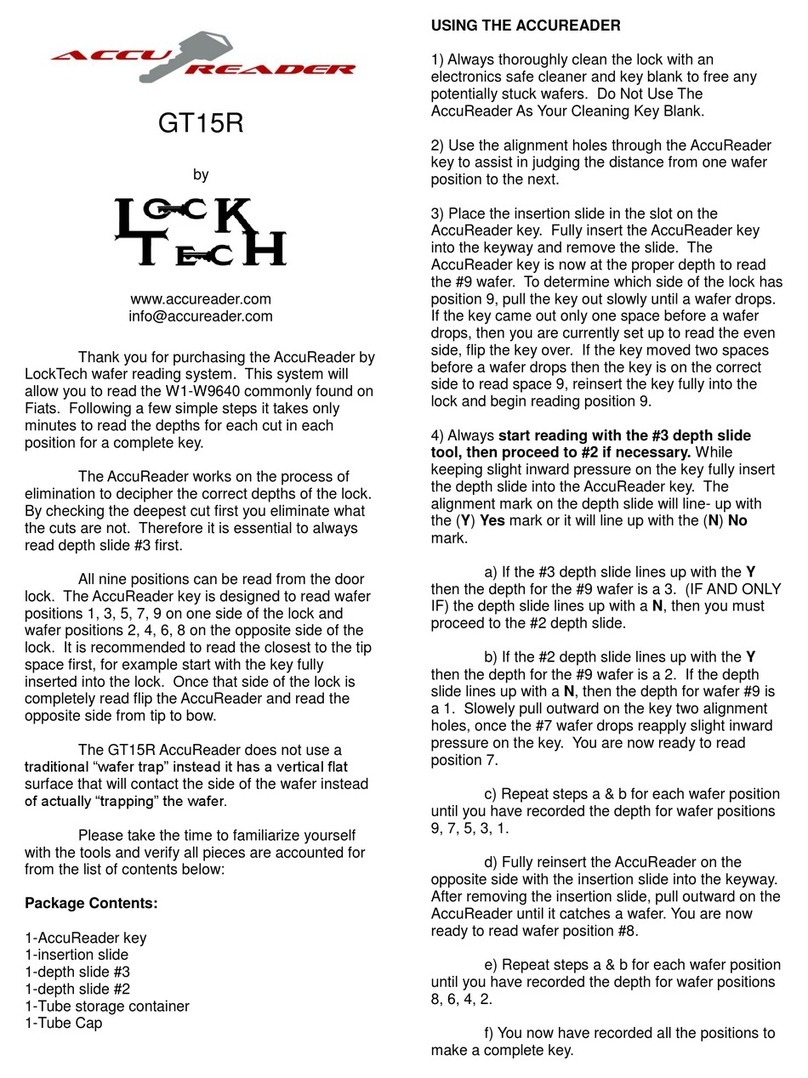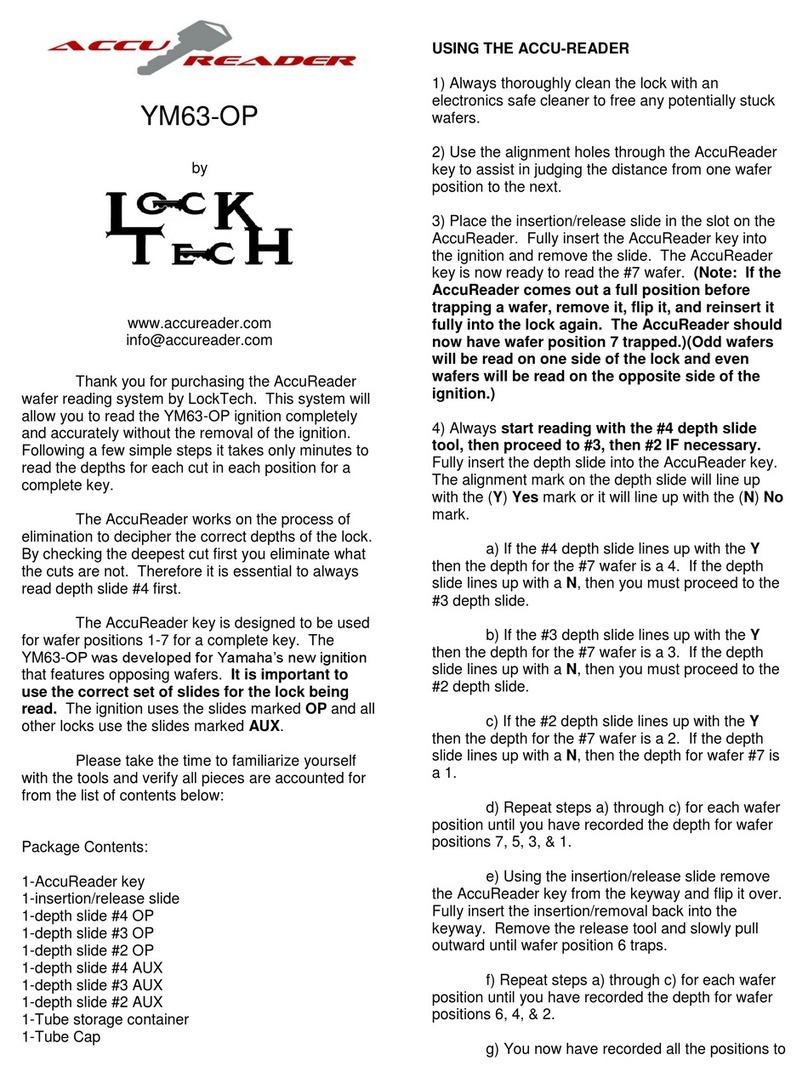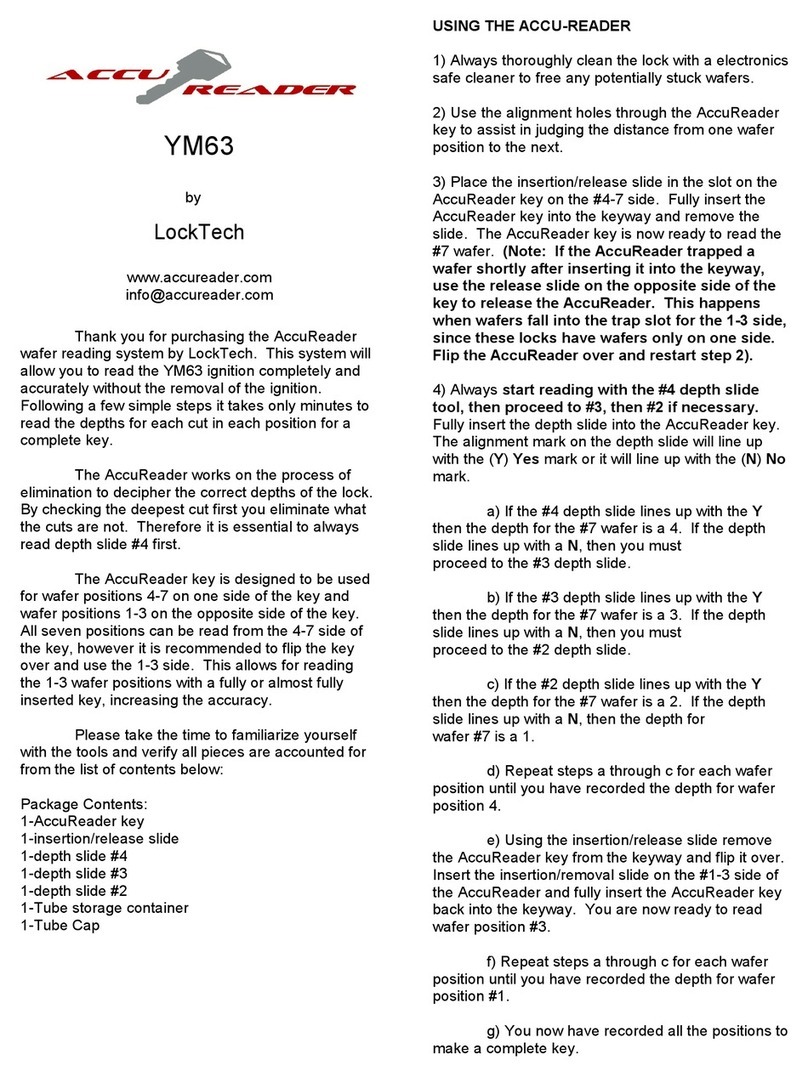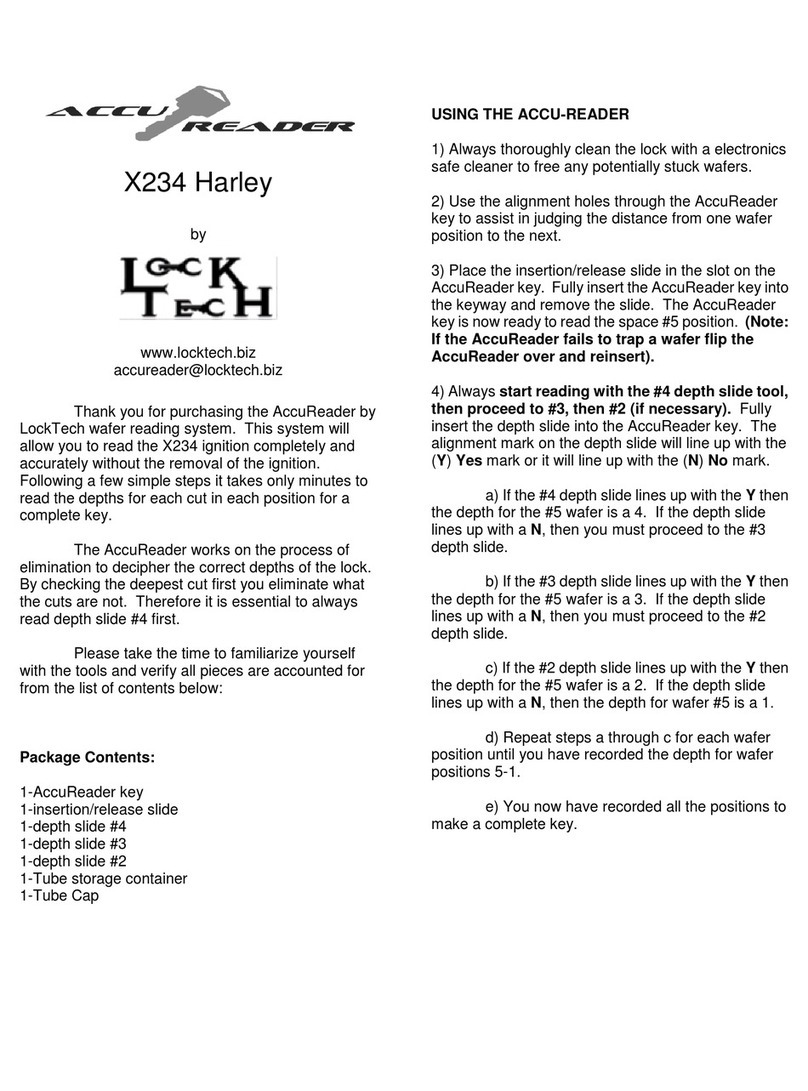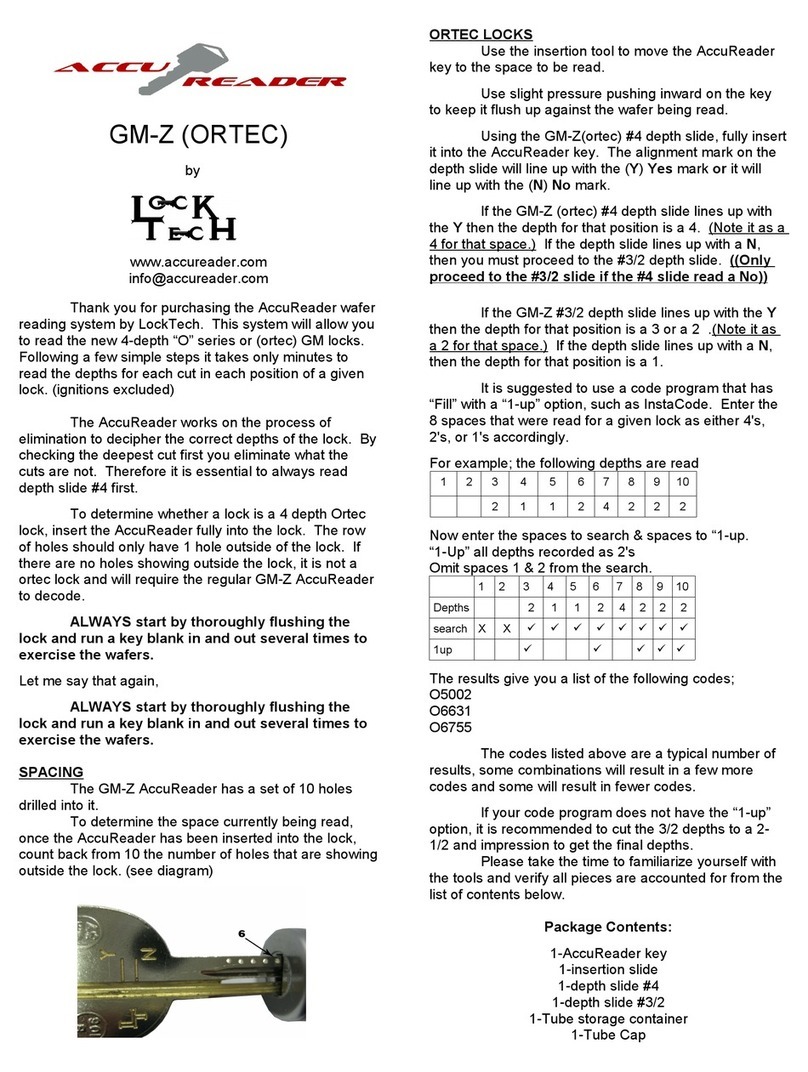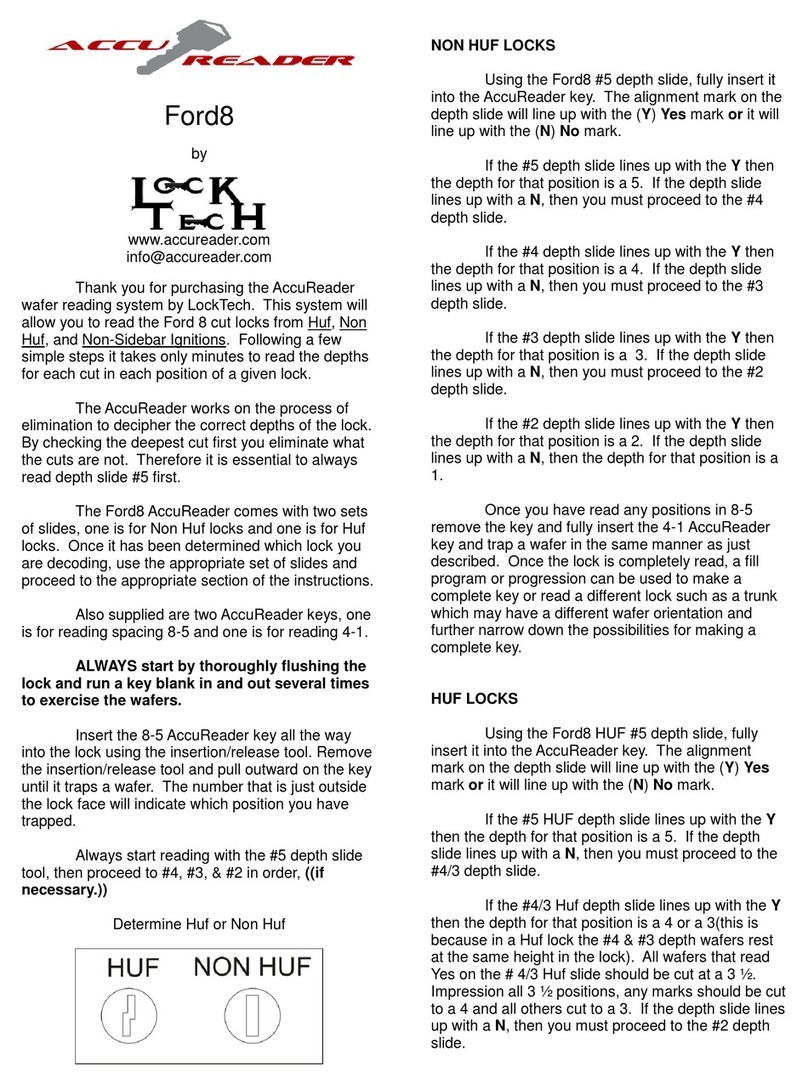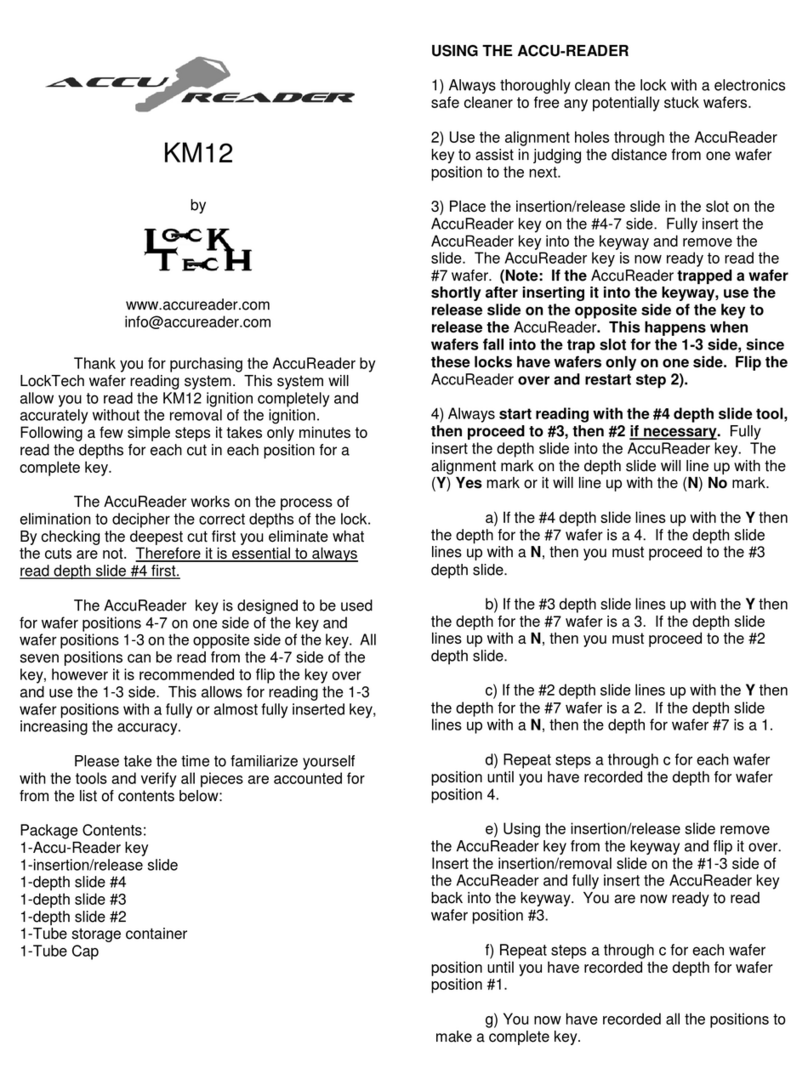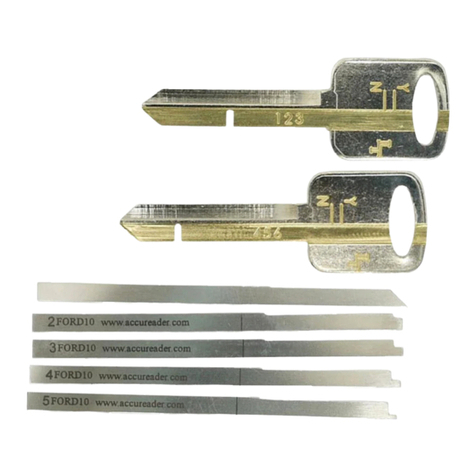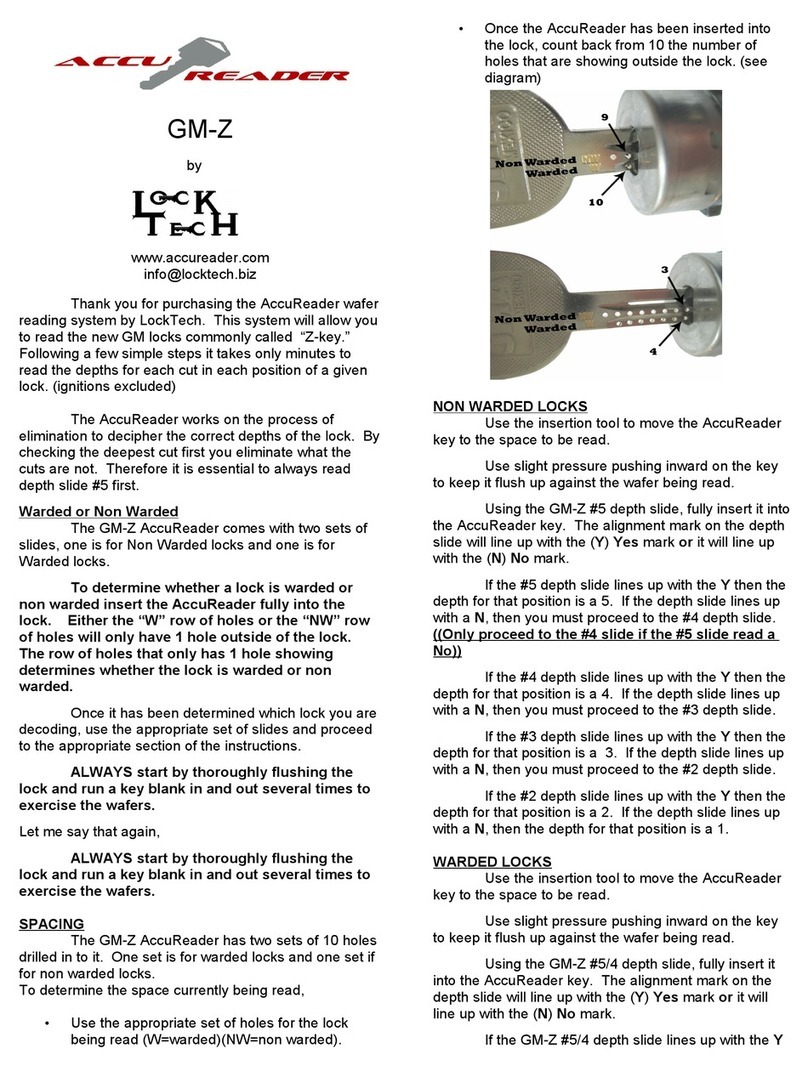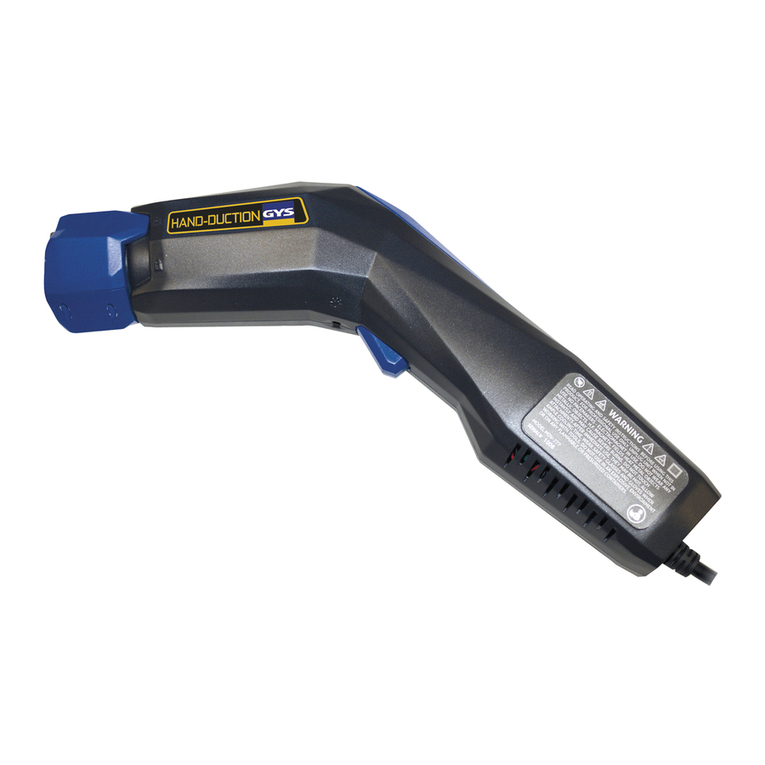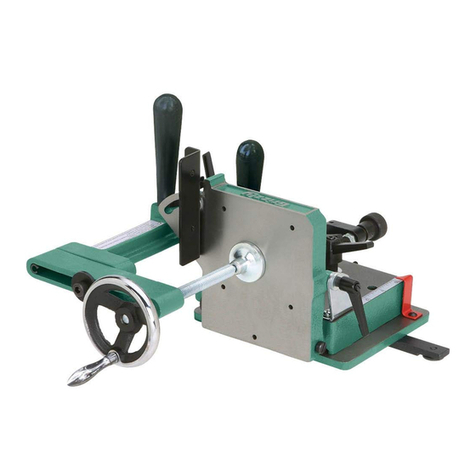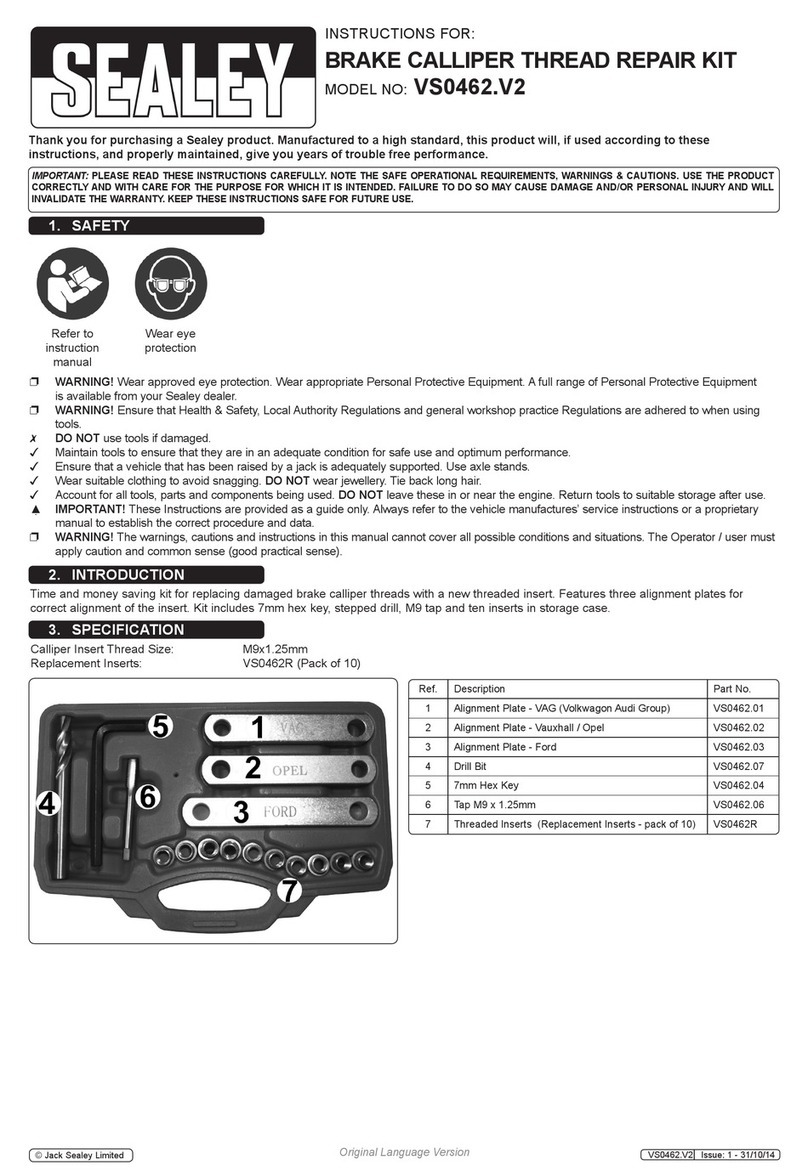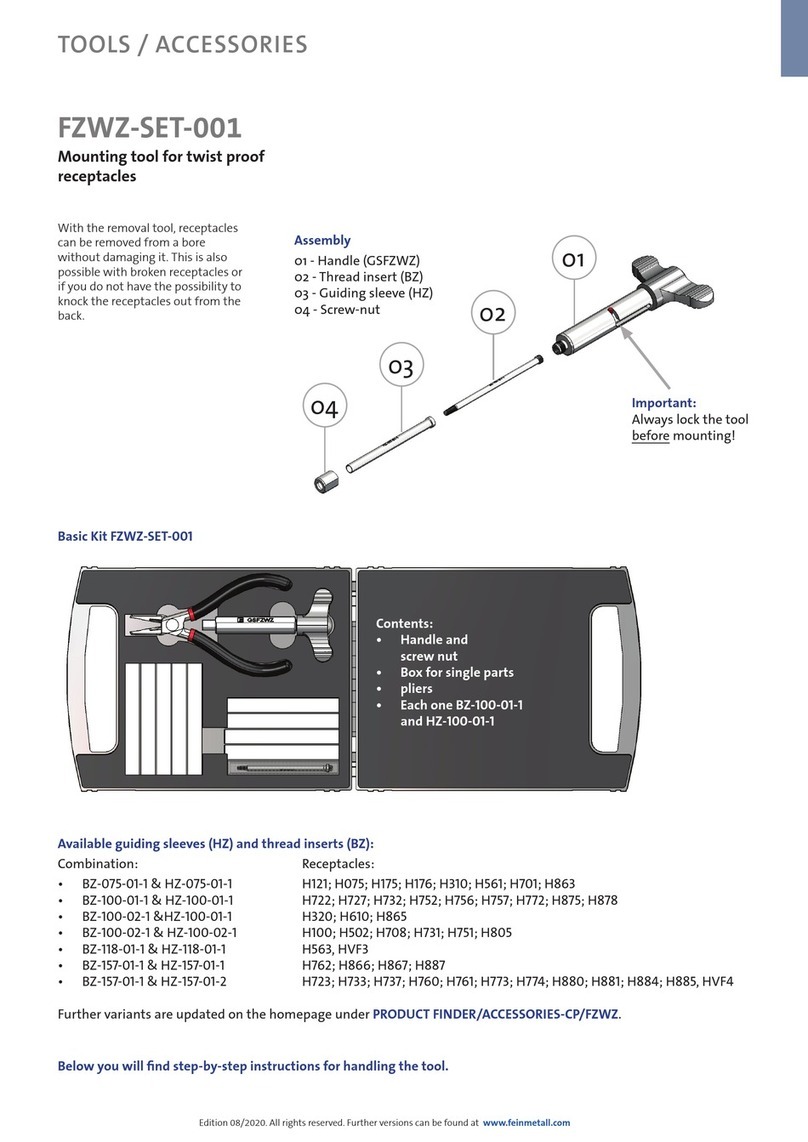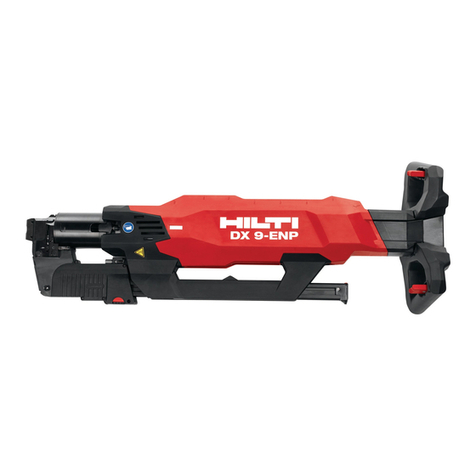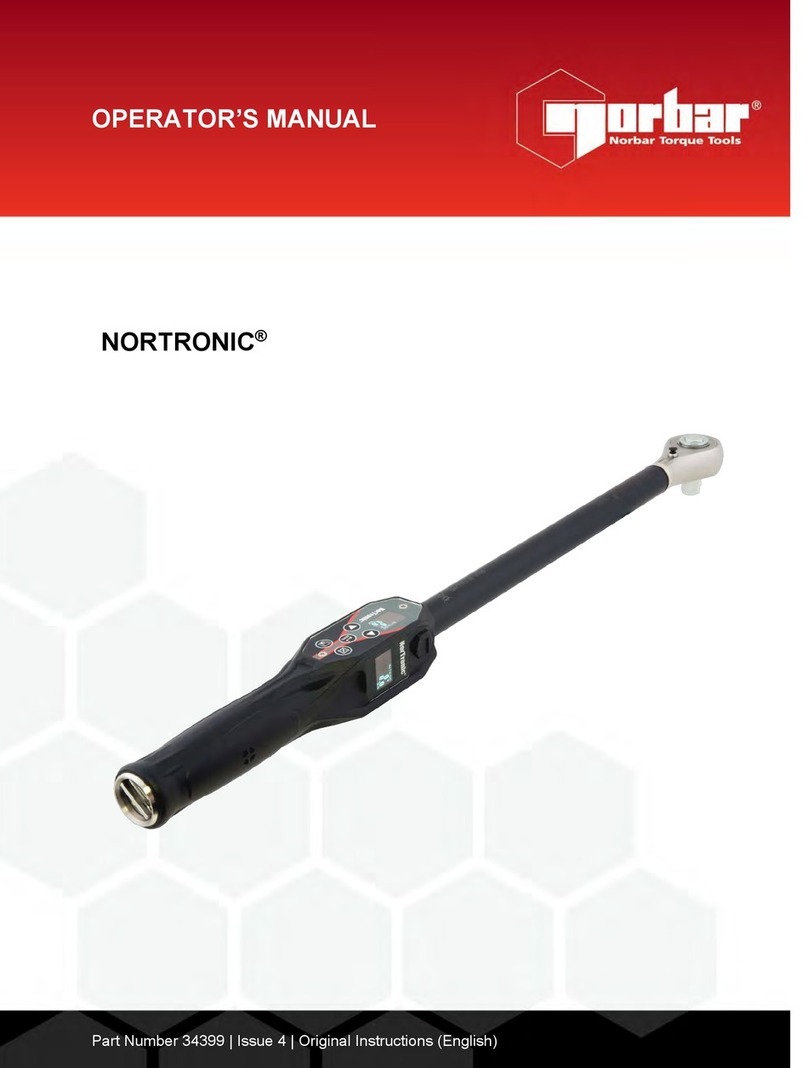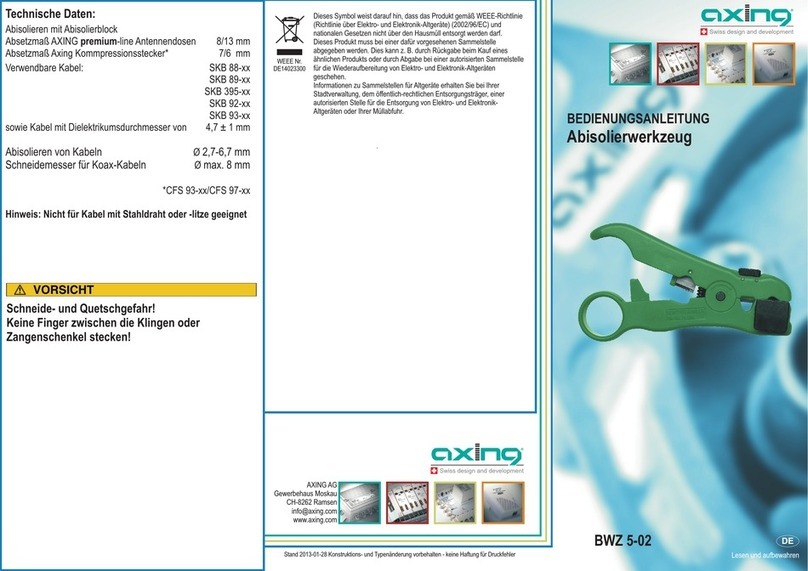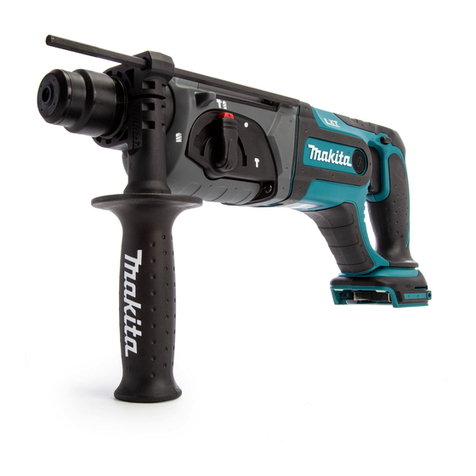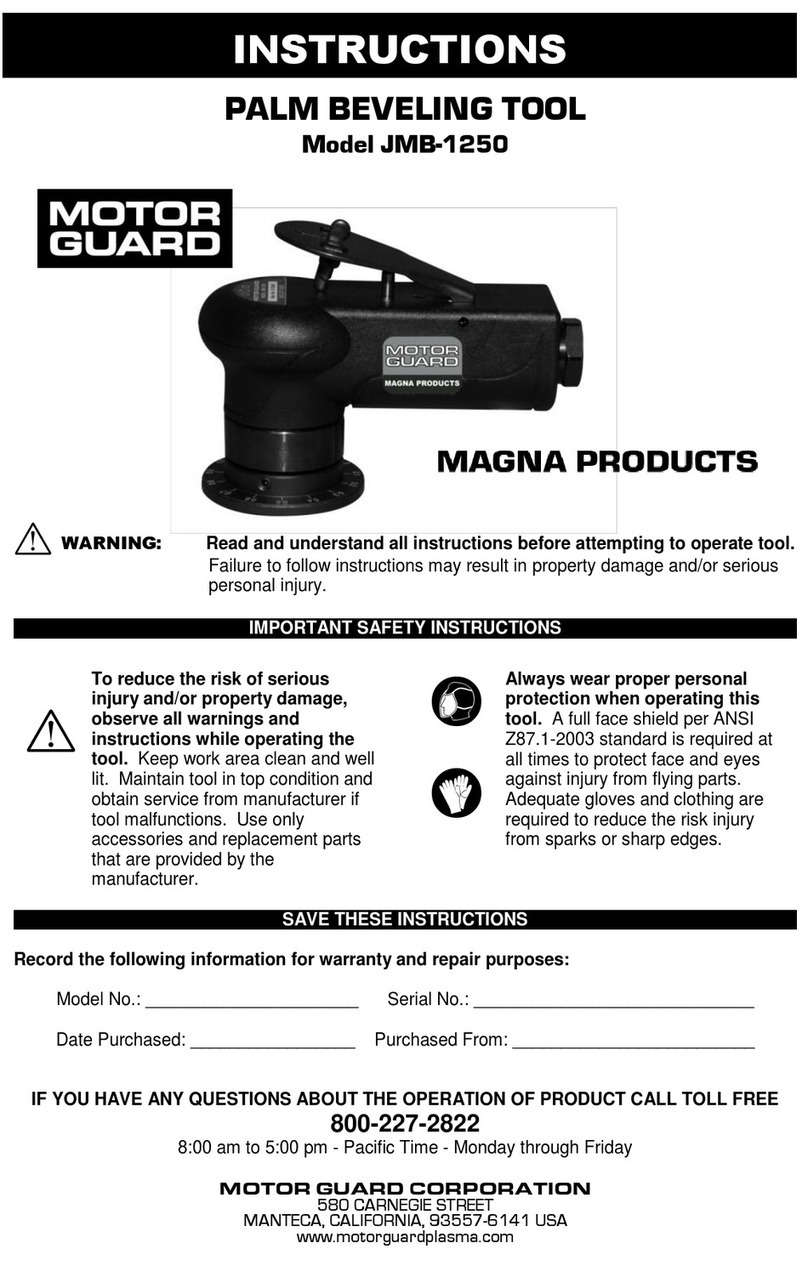
X270 (ZADI)
by
LockTech
www.locktech.biz
accureader@locktech.biz
Thank you for purchasing the AccuReader
wafer reading system by LockTech. This system will
allow you to read the Zadi (X270) ignition and other
locks without the removal of the ignition or other locks.
Following a few simple steps it takes only minutes to
read the depths for each cut in each position for a
complete key.
The AccuReader works on the process of
elimination to decipher the correct depths of the lock.
By checking the deepest cut first you eliminate what
the cuts are not. Therefore it is essential to always
read depth slide #4/3 first.
The AccuReader key is designed to be used
for wafer positions 4-7 on one side of the key and
wafer positions 1-3 on the opposite side of the key. It
is recommended to start from the rear of the lock and
work outward to the number 1 position.
Please take the time to familiarize yourself
with the tools and verify all pieces are accounted for
from the list of contents below:
Package Contents:
1-AccuReader key
1-insertion/release slide
1-depth slide #4/3C
1-depth slide #4/3OS
1-depth slide #2C
1-depth slide #2OS
1-Tube storage container
1-Tube Cap
USING THE ACCUREADER on CENTERED
KEYWAYS
1) Always thoroughly clean the lock with a electronics
safe cleaner to free any potentially stuck wafers.
2) Use the alignment holes through the AccuReader
key to assist in judging the distance from one wafer
position to the next. CENTERED Zadi keyways have
opposing wafers.
3) Place the insertion/release slide in the slot on the
AccuReader key. Fully insert the AccuReader key into
the keyway and remove the slide. The AccuReader
key should trap a wafer without pulling out any. If the
AccuReader key pulls out some before trapping a
wafer, flip the AccuReader key over and resinsert fully
to trap wafer #6. It is now ready to read the #6 wafer.
4) Always start reading with the #4/3C depth slide
tool, and then proceed to #, if necessary. Fully
insert the depth slide into the AccuReader key. The
alignment mark on the depth slide will line up with the
(Y) Yes mark or it will line up with the (N)No mark.
a) If the #4/3C depth slide lines up with the Y
then the depth for space #6 wafer is a 4 or 3. If the
depth slide lines up with a N, then you must proceed to
the #2C depth slide.
b) If the #2C depth slide lines up with the Y
then the depth for space #6 wafer is a 2. If the depth
slide lines up with a N, then the depth for space #6 is a
1.
c) Repeat steps a & b for each even wafer
position reading 6, 4 & 2. Flip the AccuReader over
and read spaces 5, 3, & 1.
d) Cut all 1’s to 1’s, 2’s to 2’s and 4/3 depths to
a 3.5. The key should turn in the lock relatively easily,
do not force. Any spaces that marked should be
moved to a 4 depth and any spaces that did not mark
should be recut to a 3 depth.
e) You now have recorded all the positions to
make a complete key.
USING THE ACCUREADER on OFFSET KEYWAYS
1) Always thoroughly clean the lock with a electronics
safe cleaner to free any potentially stuck wafers.
2) Use the alignment holes through the AccuReader
key to assist in judging the distance from one wafer
position to the next. OFFSET Zadi keyways have
wafers only on one side.
3) Place the insertion/release slide in the slot on the
AccuReader key. Fully insert the AccuReader key into
the keyway and remove the slide. The AccuReader
key should trap a wafer without pulling out. If the
AccuReader key pulls out without trapping a wafer, flip
the AccuReader key over and resinsert fully to trap
wafer #6. It is now ready to read the #6 wafer.
